Guest post by Kalpana Sharma, a talented beader, fellow Storytelling Beading Club member, and participant of the 1. Storytelling Beading Contest.
Dear Kalpana, thank you so much for your talent, your contribution, dedicated time, and energy to writing this fantastic post for our blog. The amount of new information you shared with us and we can learn from is just amazing.
Would you like to write a guest post and share your thoughts about a Storytelling Jewel you made, the source of inspiration, what you’ve learned from it, etc? Get in touch with us by sending an e-mail to [email protected] !
Dear Beaders,
A few weeks ago, I had the opportunity to take part in the 1. Storytelling Beading Contest hosted by Erika Sandor. The first category one could participate in was using one of her tutorials.
Ever since I have seen Erika’s ‘Indira bracelet tutorial’, I was struck by its versatility and how easily it could be adapted for Indian design. Which of course should not be any surprise given that it was inspired by her travel to India & is named after the first lady prime minister of India, Indira Gandhi. So, there was no doubt in my mind which tutorial I was going to be playing with for the competition … Indira it was!
The piece of jewellery that I created is called a ‘Kamarbandh’ which translates to ‘something that straps the waist’. (Kamar =Waist, Bandh = Bind/strap). This traditional Indian accessory dates back centuries. Beautiful examples of it can be seen in the sculptures of ancient temples of India. Most of the Hindu Gods & Goddess in paintings & print are always depicted with a Kamarbandh.
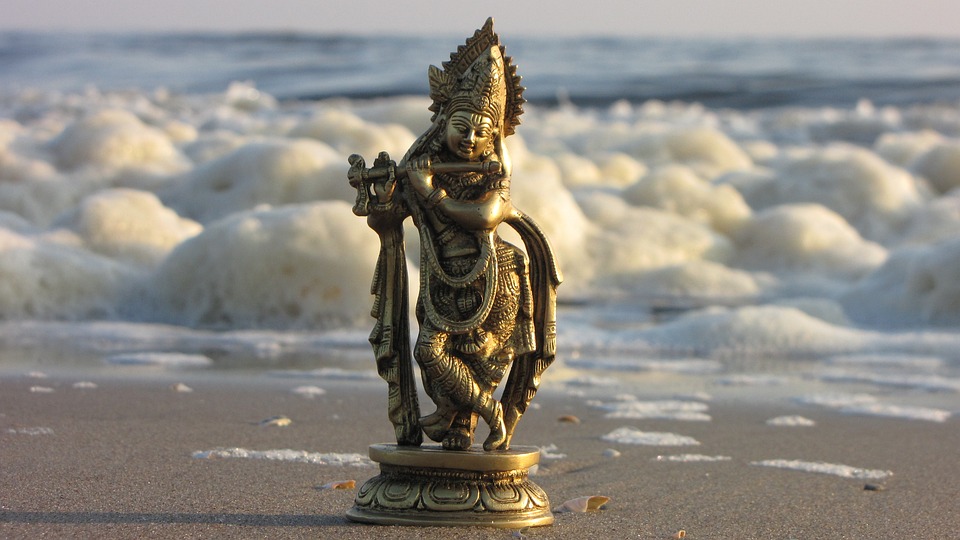
Bronze Statue of the Hindu deity Krishna with Kamarbandh
Kamarbandhs were very popular with dancers in the courts, holding their attire in place & leaving the hands & body free for graceful movements and the Kamarbandh swaying to the rhythmic music. Many forms of Indian classical dances even today have Kamarbandh as part of their attire.
The Kamarbandh is part of the costume of the South Indian dance form called Bharatnatyam. The Dance form Northern India is known as Kathak. There the female dancer often wears a Kamarbandh, while the male dancer has instead of an ornament, a sash tied around his waist.
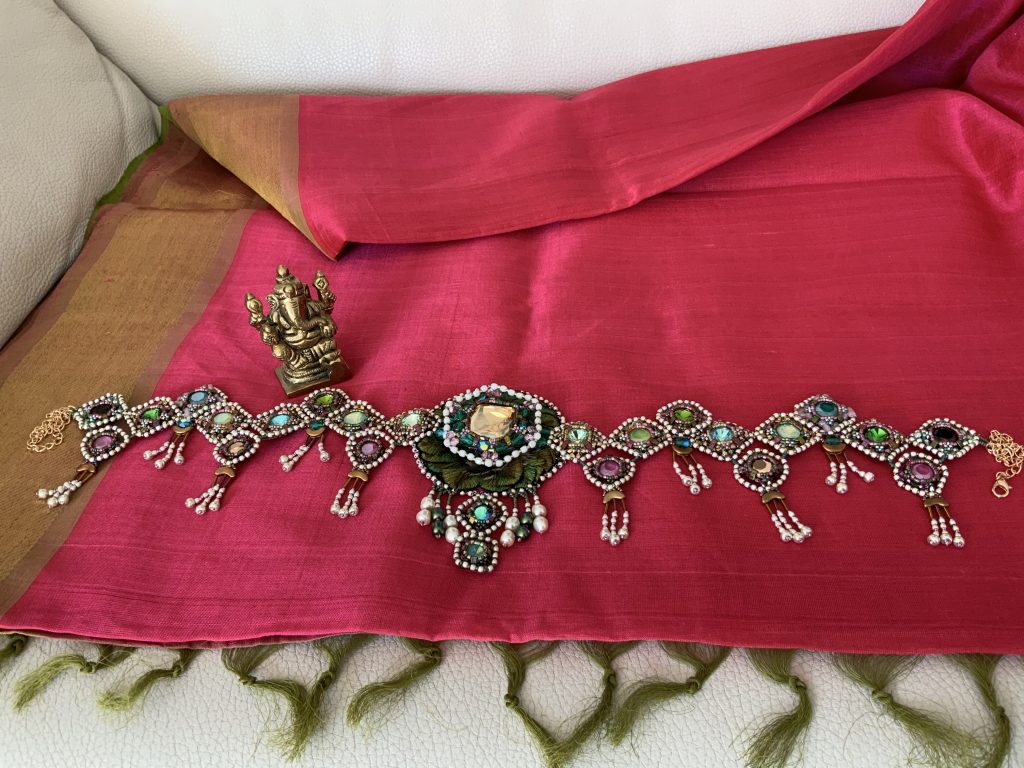
While the ladies had all the fun with the sparkling gems, the bejeweled and ornate form of Kamarbandhs were only worn by Emperors, Kings, and princes. For the common man, it used to be a sash of cloth tied around the waist many times. This sash was also known as Pataka.
In fact, this piece of garment was adopted by the British military personnel stationed in India. It provided an alternative to wearing the waistcoat in the sweltering heat as part of their formal attire. Returning British personnel bought the garment back to England & thereafter it’s spread worldwide.
The ‘Cummerbund’ (an anglicized name) now forms an integral part of Men’s Black-tie dress code. The gentleman’s Gazette has an interesting article on Cummerbund & how it has evolved over the years.
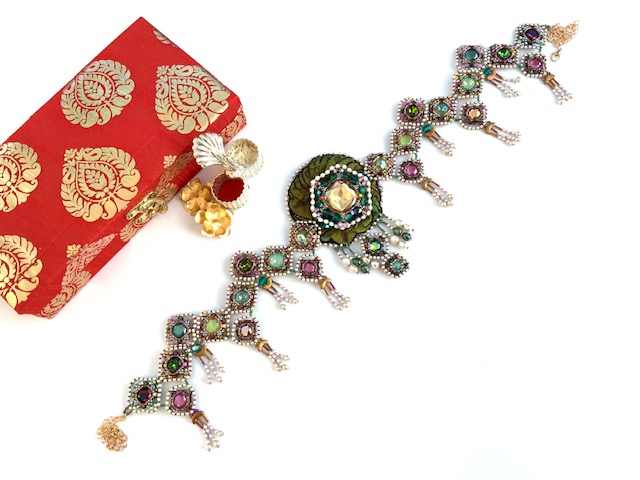
In its modern avatar, unlike other jewelry, a Kamarbandh is not just a piece of adornment for the wearer. It also keeps the pleats of Saree (Indian traditional women’s attire) in place. A very practical ornament for the bride, when her dress is quite heavy, and the wedding ceremonies run into long hours. And of course, a cinched waist adds to the beauty of the bride!
Kamarbandh is recently become very popular, not just limited to a bride’s trousseau, it can be seen adorning the waistlines at festivals and parties too.
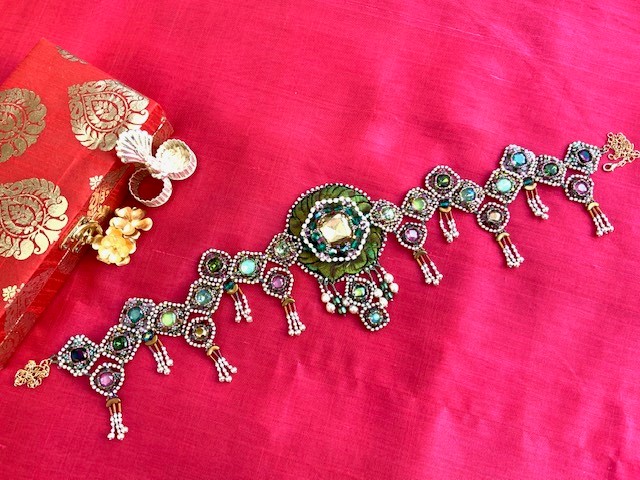
I have based my design on a style called ‘Temple Jewellery’ from Southern India. This style incorporates images of Hindu Gods & Goddess as a focal point and various motifs associated with them. These ornaments are usually made in gold with precious stones and white beads or pearls for an eye-catching contrast.
I chose Swarovski square fancy stone in pink and green to mimic the ruby and emerald traditionally used in the temple jewelry. The brushed silver beads used by Erika in Indira kits perfectly mimic the pearls used for contrast.
For my focal piece, I have worked with Peacock feathers in a nod to the Hindu deity Krishna, the God of love, who always used to wear a peacock feather in his crown. I took tips from Erika’s Traveller tutorial for sewing them to the Ultra suede and backing it with faux leather.
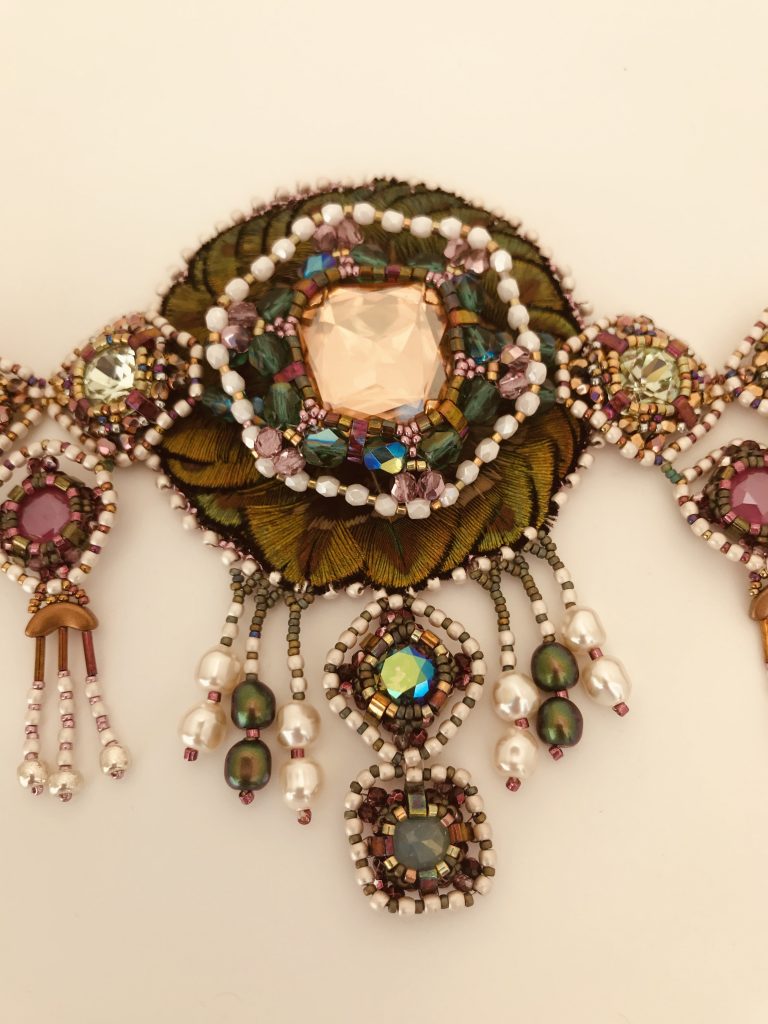
Pattern ‘Indira’ works very well not just with the 12mm square stone (part of the kit) but also, I could easily adapt it to 10mm and 8mm squares and of course for the center Swarovski Kaleidoscope 20mm Square. I was able to work this pattern over the metal frame the stone was mounted on. Joining the components was a breeze, a single 15/0 seed bead helped not only in connecting them but also kept the belt flexible enough to tie around the waist.
This is a pattern which gets done very fast and is very versatile. It could be made into almost all kinds of jewelry under the sun! I am planning to give this pattern many more twists & turns!
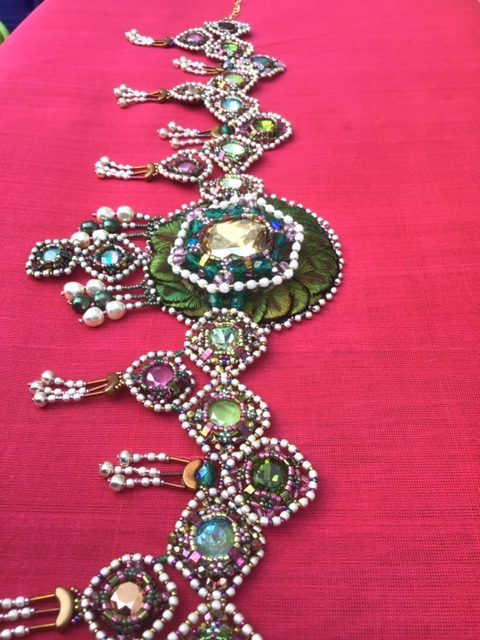
Thank you, Erika, not just for this wonderful tutorial but for this opportunity to showcase a part of Indian history.
Text by: Kalpana Sharma
Photos: Kalpana Sharma, pixabay, cleanpng.com


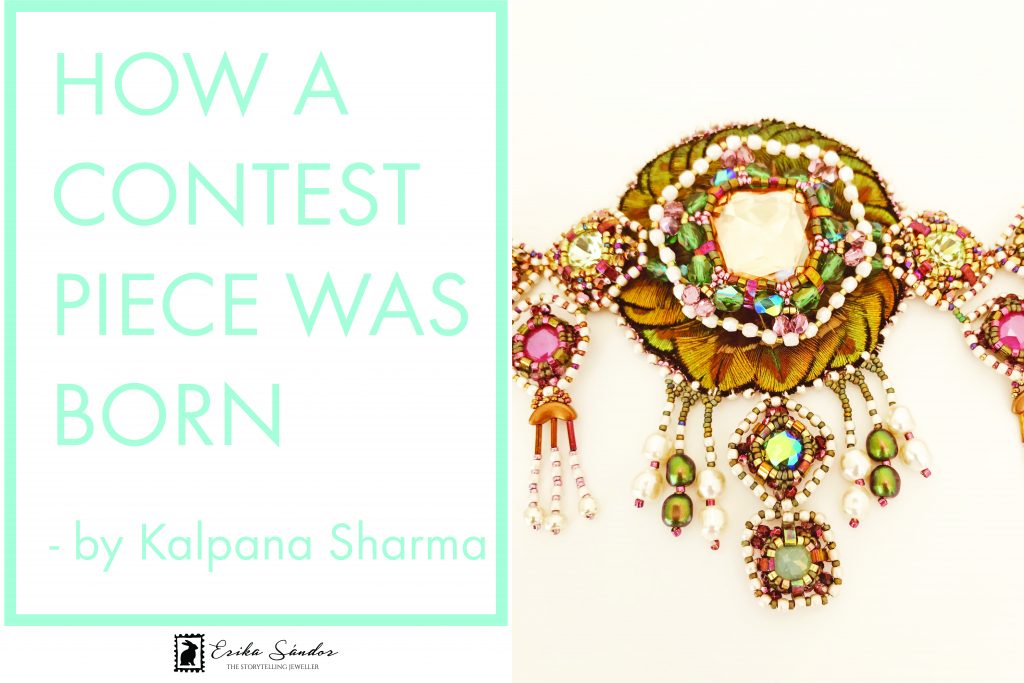
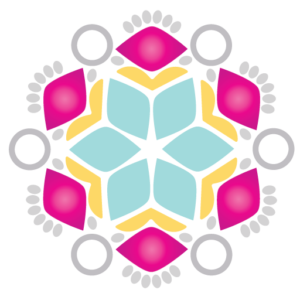
Such a wonderful masterpiece! I simply adore it! Thank you for sharing the history and idea behind the concept.